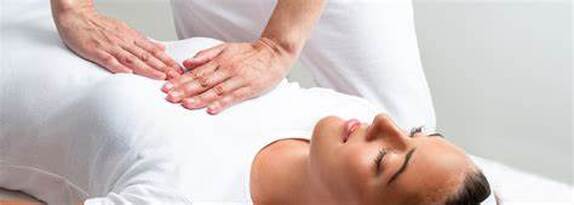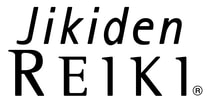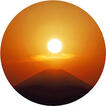What is Reiki?
Reiki means the miraculous energy that flows through all living things.
The healing art of Reiki has Japanese origins; the word
” Reiki / 靈氣” comes from the Japanese Words
“Rei=靈” which means “Universal Life”
and “Ki=氣” which means “Energy”.
Reiki practitioners understand that everyone has the natural healing ability, and we can harness the healing ability to help others. Optimally, a person’s “ki” or "energy" (also referred to as "Prana" in Yoga terms) should be strong and free-flowing. When this is true, a person’s body and mind are in a positive state of health. On the other hand, when the energy becomes weak or blocked, it leads to symptoms of physical or emotional imbalance.
Each Reiki session is a natural therapy carried out by placing hands on the body. By doing so, Reiki practitioners attune themselves to Reiki energy from the Universe and transmit the energy onto their recipients. It is a subtle and effective form of energy work using the miraculous energy.
The healing art of Reiki has Japanese origins; the word
” Reiki / 靈氣” comes from the Japanese Words
“Rei=靈” which means “Universal Life”
and “Ki=氣” which means “Energy”.
Reiki practitioners understand that everyone has the natural healing ability, and we can harness the healing ability to help others. Optimally, a person’s “ki” or "energy" (also referred to as "Prana" in Yoga terms) should be strong and free-flowing. When this is true, a person’s body and mind are in a positive state of health. On the other hand, when the energy becomes weak or blocked, it leads to symptoms of physical or emotional imbalance.
Each Reiki session is a natural therapy carried out by placing hands on the body. By doing so, Reiki practitioners attune themselves to Reiki energy from the Universe and transmit the energy onto their recipients. It is a subtle and effective form of energy work using the miraculous energy.
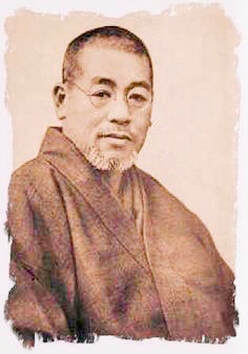 Mr. Mikao Usui the founder of Usui Reiki Therapy
Mr. Mikao Usui the founder of Usui Reiki Therapy
Western Reiki and Jikiden Reiki - What is the difference?
Submitted by Carolyn Lunn - website: http://rideaureiki.com
All forms of Reiki practiced today originated in 1922 in Japan with the founder, Mr. Mikao Usui. This simple healing practice migrated to the West in the 1930s via Hawayo Takata, a first-generation Japanese-American, and Dr. Chujiro Hayashi one of Sensei; Usui’s original students.
Mrs. Takata, who was recognized by Dr. Hayashi as a Reiki Master in 1938, continued to practice and teach in Hawaii,
on the U.S. mainland, and in British Columbia until
her death in 1980.
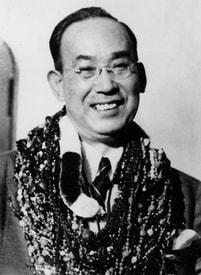 Dr. Chujiro Hayashi
Dr. Chujiro Hayashi
Within 15 years of Mrs. Takata’s death, Reiki had spread throughout the rest of the world via the 22 Masters she had trained. With this rapid growth, changes were introduced and some students began to combine Reiki with other healing practices. Terms such as chakras, aura healing, crystal healing, angel guides, etc. used by some practitioners are non-Japanese concepts and were not part of the original teachings.
Meanwhile, students of Usui and Hayashi continued to practice and teach Reiki in Japan. Western Reiki practitioners who went in search of Reiki’s traditional Japanese roots in the 1990s met Chiyoko Yamaguchi, an elderly lady who had been practicing Reiki healing techniques since she was first trained by Dr. Hayashi in 1938. On learning how much Western Reiki had changed in its journey around the world, she and her son, Tadao Yamaguchi, decided to pass on what they had learned, coining the name Jikiden Reiki. The term “jikiden” is a Japanese word that denotes a traditional art form that is passed on carefully from teacher to student without alteration.
Meanwhile, students of Usui and Hayashi continued to practice and teach Reiki in Japan. Western Reiki practitioners who went in search of Reiki’s traditional Japanese roots in the 1990s met Chiyoko Yamaguchi, an elderly lady who had been practicing Reiki healing techniques since she was first trained by Dr. Hayashi in 1938. On learning how much Western Reiki had changed in its journey around the world, she and her son, Tadao Yamaguchi, decided to pass on what they had learned, coining the name Jikiden Reiki. The term “jikiden” is a Japanese word that denotes a traditional art form that is passed on carefully from teacher to student without alteration.
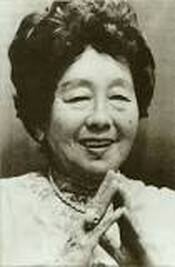 Mrs. Hawayo Takata
Mrs. Hawayo Takata
Rather than using fixed hand positions, Jikiden Reiki training involves learning to use the hands to sensitive areas in the body where there are accumulations of toxins (Boysen). Placement of the hands-on or just above these areas is used to break down and eliminate these toxins more effectively. Once toxins are eliminated, the body may more easily move into a place of balance and health. Specific techniques may also be used to release and eliminate “toxic” emotions so that may have a negative impact on health.
Western Reiki practitioners are usually taught the Five Precepts “Gokai” (Usui’s original precepts to promote a happy and healthy life) in the first level. Rather than being an “aside”, the Gokai are an integral part of Jikiden Reiki practice. Reciting the Five Precepts in Japanese morning and evening is believed to be an important part of developing compassion. By working on ourselves, we are better able to help others.
Western Reiki practitioners are usually taught the Five Precepts “Gokai” (Usui’s original precepts to promote a happy and healthy life) in the first level. Rather than being an “aside”, the Gokai are an integral part of Jikiden Reiki practice. Reciting the Five Precepts in Japanese morning and evening is believed to be an important part of developing compassion. By working on ourselves, we are better able to help others.
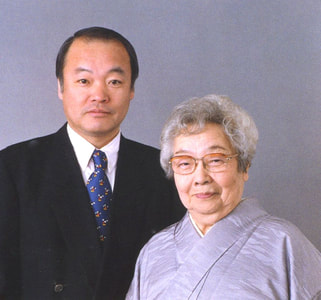 Mrs. Chiyoko Yamaguchi and her son the President of Jikiden Reiki Institute; Mr. Tadao Yamaguchi
Mrs. Chiyoko Yamaguchi and her son the President of Jikiden Reiki Institute; Mr. Tadao Yamaguchi
Thus, Jikiden Reiki is Usui Reiki. It is the Reiki directly from its birthplace, Japan. Nothing is added or amended from its original teaching from Dr. Chujiro Hayashi, one of the 20 students of Mr. Usui, the founder of Reiki. Western Reiki practice is neither better nor worse than Jikiden Reiki; it is simply a matter of personal preference. I love the explanation provided by Mari Okazaki in her blog “Tuna Roll or California Roll”. She compares Western Reiki to California Rolls which have been created to suit the Western taste, based on the Japanese sushi recipe or to Modern and Contemporary Ballet as opposed to Classical Ballet.
In whatever form it takes, Reiki continues to be a highly effective technique for promoting the relaxation necessary for the body to engage its internal self-healing resources.
In whatever form it takes, Reiki continues to be a highly effective technique for promoting the relaxation necessary for the body to engage its internal self-healing resources.
The Mission of Jikiden Reiki
Our mission of Jikiden Reiki is to help people fulfill their lives with a peaceful state of mind and to enhance both physical and psychological health. We are dedicated to promoting Reiki therapy in order to reduce the use of medication on a global scale. We also aim to gain acceptance for the holistic practice of Reiki therapy by the medical community where the therapeutic value of Reiki may meet the greatest needs.
Our mission of Jikiden Reiki is to help people fulfill their lives with a peaceful state of mind and to enhance both physical and psychological health. We are dedicated to promoting Reiki therapy in order to reduce the use of medication on a global scale. We also aim to gain acceptance for the holistic practice of Reiki therapy by the medical community where the therapeutic value of Reiki may meet the greatest needs.
